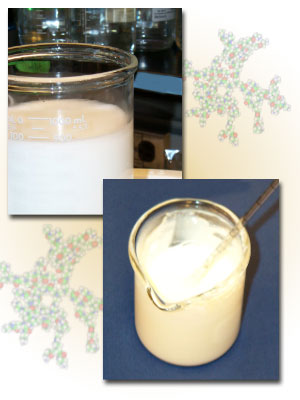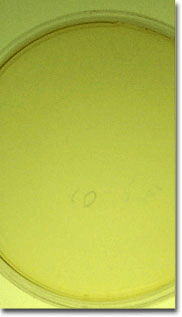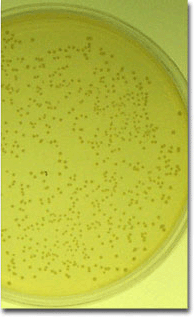

| Nanoemulsions |
CBN Home
|
|
 |
•
|
They are water-in-oil mixed with high shear forces. |
|
•
|
They are ~ 400-800 nm in diameter. | |
|
•
|
They
fuse with cell membrane of microorganisms resulting in cell lysis. |
|
|
•
|
Very
effective in killing:
– Bacteria, – Bacterial spores, – Enveloped viruses, and – Fungal spores. |
|
|
•
|
They are effective at preventing illness in individuals, when used both before and after exposure to the infective agent. | |
|
•
|
They
could be used:
– Topically, – As an irrigant (IM and SC), – As an inhalant. |
|
|
||
|
Bacterial contamination of food represents one of the major
public health problems worldwide. Food contamination is endemic in
underdeveloped countries. It is also a major source of illness in
developed countries including the United States. The CDC estimates
over 325,000 hospitalizations, and 15,000 deaths in the U.S.
annually, with costs estimated to be $3 to $7 billion annually.
Salmonellae, are common food borne bacteria, and are associated
with eating contaminated eggs and poultry.
|
Surfaces that come in contact with food during processing are a significant source of bacterial contamination. The image shows samples of surface material being tested to see how well nanoemulsions reduce the bacterial count. |
Consumption of
contaminated food results in a high percentage of food borne infections
caused by enteric pathogens. This results in a high rate of morbidity
and mortality. This problem is much higher in developing contires.
Namoemulsions are effective against a variety of food pathogens including Gram-negative bacteria. They can be used for surface decontamination of food processing plants and for recuction of surface contamination of chicken skin. |
 |
Salmonella typhimurium is a
major cause of food borne illness, causing an estimated 10,000 deaths a
year in the United States. The images are of two petri dishes that were
both seeded with Salmonella. The one on the left was also treated
with namoemulsion. The growth of bacteria colonies has been eliminated
by treatment with nanoemulsion.
|
 |
| Treated |
Untreated
|
| For questions or comments regarding this page please contact: nwbeeson@med.umich.edu. Last update October 23, 2001 4:16 PM |